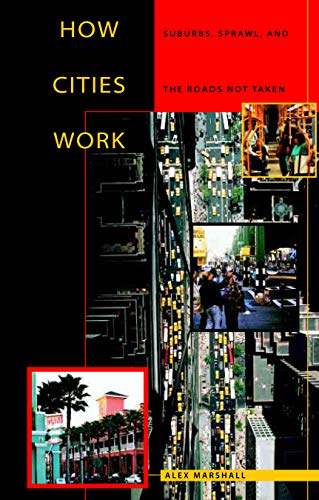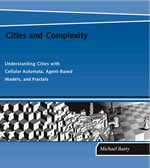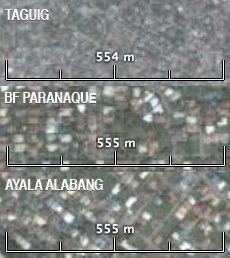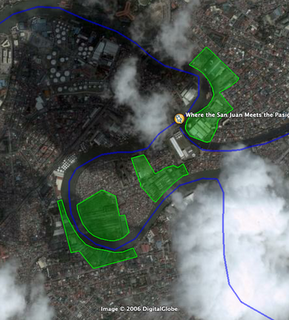 (Cross posted from Philippines Makeover.)
(Cross posted from Philippines Makeover.)
There are at least 5 roads in Metro Manila that I'd like to re-imagine and redesign, namely:
- Commonwealth Avenue (R-7)
- Quezon Avenue / Espana (R-7)
- Ortigas Avenue (R-5A)
- Sucat Road
- Alabang-Zapote Road
(Download the kml file via Google Earth Philippines. or view it on Google Maps.)There is so much we can do to make them work and look better -make them more pedestrian and bike friendly -and they will contribute to the a more livable urban environment.
As wrote about
rethinking our streets before, also
here and
here.
What can these streets be? I've cribbed the great images from the Livable Cities presentation of the
American Institute of Architect's
Center for Community by Design (Get the powerpoint presentation
here 1,792 KB - and the PDF
here 1,769 KB).
The pictures and text below are all from AIA. Click on the images for a larger version.

Here you have a typical strip commercial development. This image is from Hawaii but it could be Anywhere. This is clearly a car-oriented landscape with narrow sidewalks, a wide roadway and buildings set far back.

In this image, four key streetscape improvements have begun to change this to a pedestrian-oriented landscape.
- The sidewalks have been widened with landscape buffers to protect pedestrians from traffic;
- The buildings have been brought forward towards the sidewalk and retail has been added the first floors to create an interesting place for people to walk along;
- A bike lane has been added to the road to accommodate cyclists and provide another transportation choice;
- A median is included to reduce the perceived width of the road and facilitate pedestrian crossings.

On the far side of the street, they’ve added mid-rise residential buildings with more retail on the ground floor. This mix of uses promotes neighborhood activity at all hours of the day.
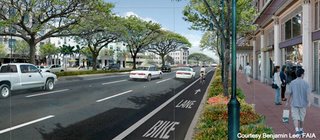
By adding trees and landscaping, the street becomes a pleasant, shady place to stroll. Also notice another building in the background has been added. Infill development helps to preserve urban centers.

This image shows an alternative way to create a human-scaled street. Here, the bike lane is separated from thru-traffic and brought in with a local circulation lane for shoppers. The retail is still pedestrian-oriented and the angled parking serves a buffer from traffic.
I see no reason why we can't do this. And we can argue about the effects this will have on traffic.
For more images and like those above, visit
Urban Advantage.

